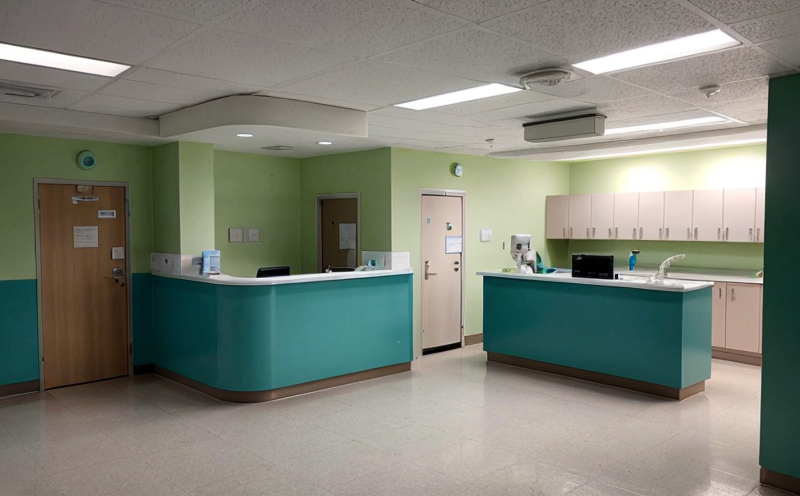ASTM E2694 ATP Bioluminescence Testing in Hospital Environments
The ASTM E2694 standard provides a robust framework for measuring Total Adenylate Phosphates (ATP) levels using bioluminescence technology. This method is particularly valuable in hospital and healthcare environments where maintaining high standards of hygiene and cleanliness are paramount to patient safety and infection control.
The ATP testing procedure measures the presence and concentration of organic matter, including microorganisms, on surfaces or swab samples. By detecting ATP levels, facilities can identify potential contamination hotspots before they escalate into full-blown outbreaks. This proactive approach enables healthcare providers to implement targeted cleaning protocols more effectively, enhancing overall sanitation.
The bioluminescence technique used in ASTM E2694 is based on the natural glow produced by fireflies when luciferase interacts with ATP. When this enzyme encounters ATP, it produces a measurable light emission. This reaction allows for rapid and accurate quantification of ATP levels within samples.
Using ATP testing aligns with broader healthcare industry practices aimed at improving patient outcomes through better hygiene management. It supports the World Health Organization's (WHO) recommendations on infection prevention and control, which emphasize the importance of continuous monitoring and improvement of cleaning processes in hospitals.
The procedure involves several key steps: sampling, extraction, measurement, and interpretation. Samples are typically taken from various touchpoints like door handles, keyboards, faucets, and other high-contact surfaces. The extracted ATP is then analyzed using a luminometer, which measures the light output as an indicator of microbial presence.
The results generated by this testing method can help facilities identify areas that require immediate attention. For instance, if a surface shows significantly higher than expected ATP levels, it indicates increased risk factors for cross-contamination and infection spread. This information is crucial for quality managers, compliance officers, R&D engineers, and procurement teams who need to ensure adherence to strict hygiene standards.
By leveraging ASTM E2694, healthcare environments can achieve greater efficiency in their cleaning practices. Regular ATP testing helps optimize resource allocation by focusing efforts on areas most likely to benefit from enhanced sanitation measures. This not only improves the overall cleanliness of facilities but also contributes positively to staff and patient satisfaction.
Industry Applications
- Hospitals and clinics for routine surface hygiene checks
- Surgeon rooms and operating theaters before and after procedures
- Nursing units, especially those caring for immunocompromised patients
- Patient waiting areas to monitor public touchpoints
Competitive Advantage and Market Impact
- Enhanced reputation through superior hygiene practices
- Increased patient trust and satisfaction leading to better retention rates
- Achievement of regulatory compliance with ease
- Cost savings from targeted cleaning efforts rather than blanket sanitation measures





